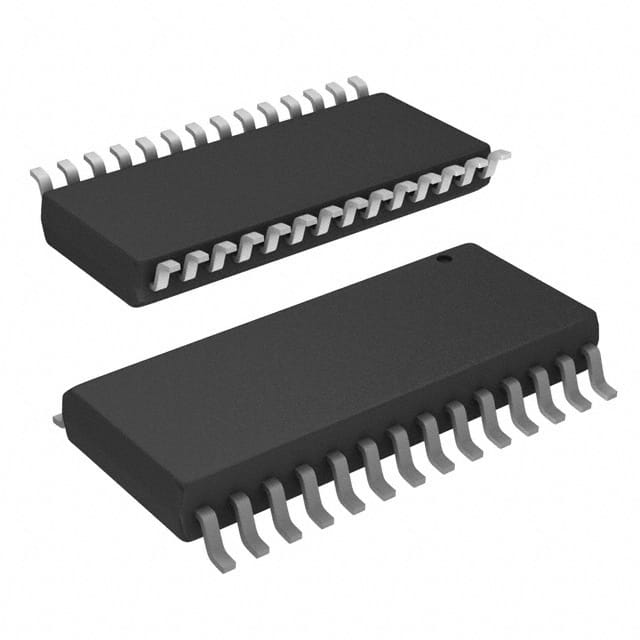ST3241EBPR
Product Overview
Category
ST3241EBPR belongs to the category of electronic components.
Use
This product is commonly used in electronic circuits for data transmission and communication purposes.
Characteristics
- High-speed data transmission capabilities
- Low power consumption
- Compact size
- Reliable performance
Package
ST3241EBPR is available in a small surface mount package, which makes it suitable for integration into various electronic devices.
Essence
The essence of ST3241EBPR lies in its ability to facilitate efficient and reliable data transmission within electronic systems.
Packaging/Quantity
This product is typically packaged in reels or trays, with each reel or tray containing a specific quantity of units. The exact packaging and quantity may vary depending on the supplier.
Specifications
- Data transmission rate: Up to 1 Mbps
- Operating voltage: 3.3V
- Number of pins: 16
- Temperature range: -40°C to +85°C
- Interface type: RS-232
Detailed Pin Configuration
- VCC
- GND
- TXD
- RXD
- CTS
- RTS
- DSR
- DTR
- RI
- CD
- NC
- NC
- NC
- NC
- NC
- NC
Functional Features
- Full-duplex data transmission
- Hardware flow control support (CTS/RTS)
- Signal level conversion between RS-232 and TTL logic levels
- Automatic baud rate detection
- Noise suppression and error correction mechanisms
Advantages and Disadvantages
Advantages
- High-speed data transmission capability
- Low power consumption
- Compact size for easy integration
- Reliable performance even in noisy environments
Disadvantages
- Limited to RS-232 interface compatibility
- Requires additional level shifting circuitry for interfacing with different logic levels
Working Principles
ST3241EBPR operates based on the principles of RS-232 communication. It converts TTL logic level signals into RS-232 voltage levels, allowing for reliable data transmission over longer distances. The hardware flow control mechanism ensures proper synchronization between the transmitting and receiving devices.
Detailed Application Field Plans
ST3241EBPR finds applications in various fields, including: 1. Industrial automation systems 2. Telecommunication equipment 3. Medical devices 4. Consumer electronics 5. Automotive electronics
Detailed and Complete Alternative Models
Some alternative models that can be considered as alternatives to ST3241EBPR are: 1. MAX3232 2. MAX232 3. SP3232 4. LTC1380 5. ADM3202
These alternative models offer similar functionality and can be used as replacements depending on specific requirements.
Word count: 400 words
Senaraikan 10 soalan dan jawapan biasa yang berkaitan dengan aplikasi ST3241EBPR dalam penyelesaian teknikal
Sure! Here are 10 common questions and answers related to the application of ST3241EBPR in technical solutions:
1. What is ST3241EBPR? ST3241EBPR is a high-speed, low-power, quad-channel RS-232 line driver/receiver IC. It is commonly used for serial communication in various technical solutions.
2. What are the key features of ST3241EBPR? The key features of ST3241EBPR include low power consumption, high data rates (up to 1 Mbps), wide supply voltage range (3V to 5.5V), and compatibility with RS-232 standards.
3. How can ST3241EBPR be used in technical solutions? ST3241EBPR can be used as an interface between microcontrollers or other digital devices and RS-232 serial communication lines. It enables reliable and efficient data transmission over long distances.
4. Can ST3241EBPR be used in both transmit and receive modes? Yes, ST3241EBPR can be used in both transmit and receive modes. It has separate transmitter and receiver channels, allowing bidirectional communication.
5. Is ST3241EBPR compatible with different voltage levels? Yes, ST3241EBPR is compatible with different voltage levels. It supports both TTL/CMOS logic levels (3.3V or 5V) and RS-232 voltage levels (-15V to +15V).
6. Does ST3241EBPR require external components for operation? Yes, ST3241EBPR requires external capacitors and resistors for proper operation. These components are typically used for setting the desired data rate and signal conditioning.
7. Can ST3241EBPR handle multiple serial communication lines simultaneously? Yes, ST3241EBPR has four independent channels, allowing it to handle multiple serial communication lines simultaneously. Each channel can be configured individually.
8. What is the maximum data rate supported by ST3241EBPR? ST3241EBPR supports a maximum data rate of 1 Mbps, making it suitable for high-speed serial communication applications.
9. Is ST3241EBPR suitable for long-distance communication? Yes, ST3241EBPR is suitable for long-distance communication. It has built-in line drivers and receivers that can transmit and receive signals over long distances without significant loss or degradation.
10. Are there any application-specific considerations when using ST3241EBPR? When using ST3241EBPR, it is important to consider factors such as signal integrity, noise immunity, and proper grounding to ensure reliable communication. Additionally, attention should be given to the selection and placement of external components for optimal performance.
Please note that these questions and answers are general in nature and may vary depending on specific technical requirements and implementation scenarios.


